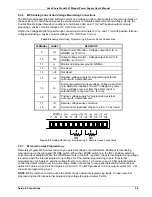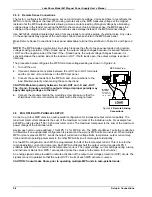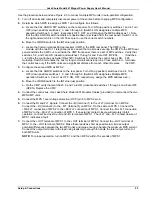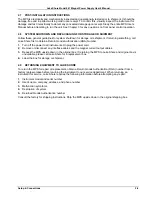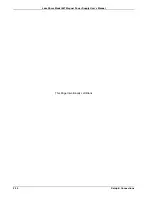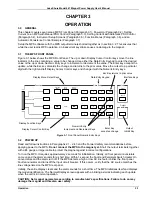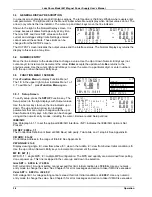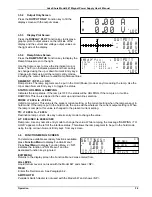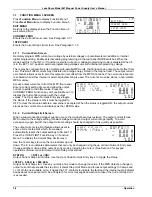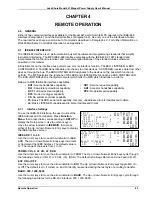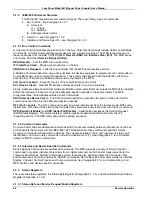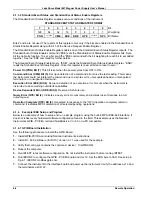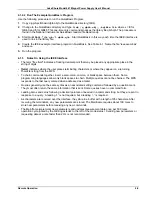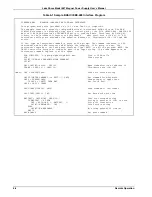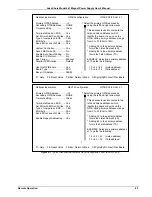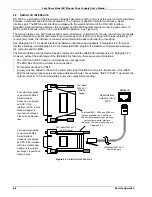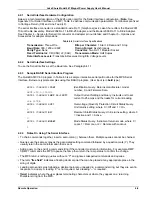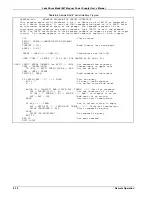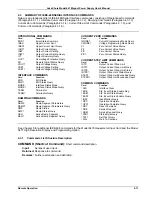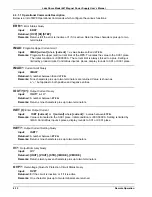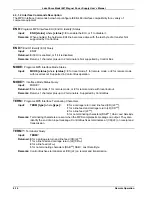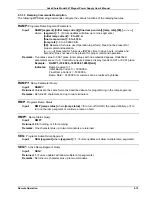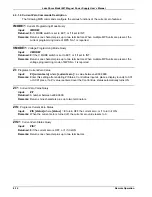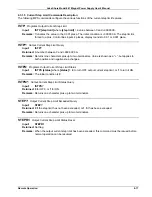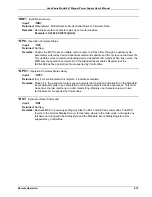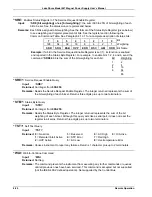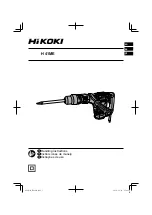
Lake Shore Model 647 Magnet Power Supply User’s Manual
Remote Operation
4-5
4.1.4.2 Run The Example QuickBasic Program
Use the following procedure to run the QuickBasic Program.
1.
Copy c:\gpib-pc\Qbasic\qbib.obj to the QuickBasic directory (QB4).
2.
Change to the QuickBasic directory and type:
link /q qbib.obj,,,bqlb4x.lib
where x =
0
for
QB4.0 and
5
for QB4.5 This one-time only command produces the library file qbib.qlb. The procedure is
found in the National Instruments QuickBasic readme file Readme.qb.
3.
Start QuickBasic. Type:
qb /l qbib.qlb
.
Start QuickBasic in this way each time the IEEE interface is
used to link in the library file.
4.
Create the IEEE example interface program in QuickBasic. See Table 4-1. Name the file “ieeeexam.bas”
and save.
5.
Run the program.
4.1.5 Notes On Using the IEEE Interface
• The term "free field" indicates a floating decimal point that may be placed any appropriate place in the
string of digits.
•
[term]
indicates where the user places terminating characters or where they appear on a returning
character string from the MPS.
• To chain commands together, insert a semi-colon, comma, or blank space between them. Some
programming languages allow only blank spaces to chain. Multiple queries cannot be chained. The MPS
responds to the last query entered when addressed as a talker.
• Queries generally use the same syntax as an associated setting command followed by a question mark.
They most often return the same information that is sent. Some queries have no command form.
• Leading zeros and zeros following a decimal point are unneeded in a command string, but they are sent in
response to a query. A leading “+” is not required, but a leading “–” is required.
• As characters are received over the interface, they store in a buffer with a length of 95 characters. After
receiving the terminators, any new parameters are stored. The Mainframe requires about 100 msec to
store new parameters before receiving any new commands.
• The Mainframe implements new parameters and updates measurement data once per 500 msec
operation cycle (noted by the blinking asterisk to the left of the mode status). Sending new parameters or
requesting data at a rate faster than 2 Hz is not recommended.

